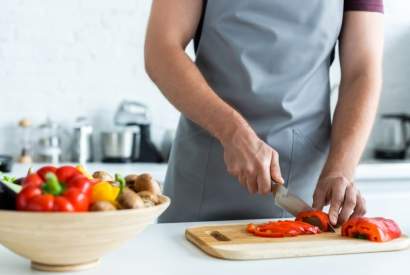
Antifungal Diet
Treatment of Lyme disease and comorbidities is difficult and long-lasting. Each case of the disease is different and requires individual approach, both in terms of antibiotic therapy, herbal medicine or diet. Often, however, the initial fight with the disease begins with the administration of an antibiotic, often for up to several months. It is a huge burden for the body. That is why choosing the right diet is so crucial.
An appropriate menu during antibiotic therapy used in Lyme disease should:
- support the liver in the detoxification process of the body
- strengthen the immune system
- prevent the development of mycosis
- support the digestive process
- help restore the normal intestinal bacterial flora
Chronic antibiotic therapy in people suffering from Lyme disease or its co-infection is a common cause of the development of mycosis (Candida albicans). Then it is worth applying its prophylaxis - an antifungal diet.
The main rule of the antifungal diet is the elimination of sugar. You should exclude sucrose (sugar from a sugar bowl) and various types of confectionery or products whose main product is white, wheat flour, pasta or rice. Also "prohibited" products are alcohol, carbonated drinks, hot spices, fatty meats and cheeses (melt, mold, yellow). Such products create an ideal environment for the multiplication of fungi in our body. Sugar is also a good breeding ground for bacteria. People with Lyme disease should avoid sugar in their diet.
Remember, however, that it is not worth giving up all carbohydrates. Products such as wholemeal bread, pasta or groats do not have to be excluded from our menu. We should also not forget about natural yoghurts, nuts, raw vegetables, unrefined oils, fish, silage and legume seeds. Spices will also work here: turmeric, oregano, rosemary, coriander and Ceylon cinnamon.
Only when we have diagnosed candidiasis (when there is an overgrowth of the yeast Candida albicans, which physiologically occurs in the gastrointestinal tract and disturbs our intestinal microflora), we should think about alternative methods of diet therapy. It is, among others 4-step feeding regimen.
STAGE I
Only lean meat, some raw vegetables (except pods), natural yoghurt and kefir, water, herbal teas are allowed.
STAGE II
We are slowly introducing dark rice, potatoes and other complex carbohydrates into the diet.
Stage III
Further raw fruit, nuts or legumes are allowed.
STAGE IV
Honey or coffee appears sporadically.
This method of nutrition is very restrictive, which can lead to many deficiencies, so it should be used only under the supervision of a qualified clinical dietitian.

 Boosting Your Libido Naturally with Herbal Supplements
Boosting Your Libido Naturally with Herbal Supplements
 Unlocking Energy Potential: Shilajit's Impact on ATP Production and Vitalit
Unlocking Energy Potential: Shilajit's Impact on ATP Production and Vitalit
 Collagen's Role in Lyme Disease Recovery: Understanding Its Vital Benefits
Collagen's Role in Lyme Disease Recovery: Understanding Its Vital Benefits
 Helicobacter Pylori- Natural Treatment
Helicobacter Pylori- Natural Treatment
 Sleep and Immunity
Sleep and Immunity